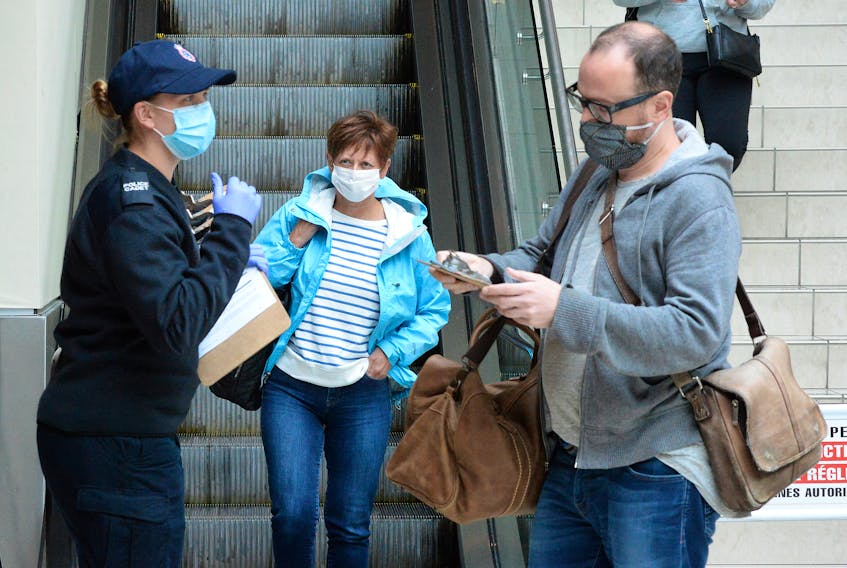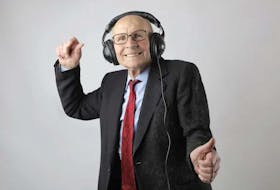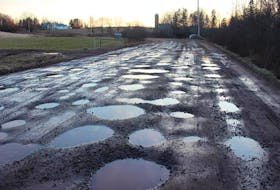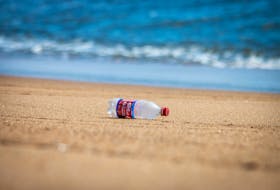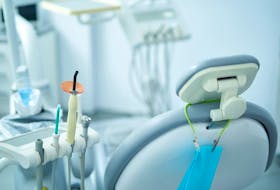It’s an interesting conundrum.
Sunday, CBC News ran a story about a passenger who boarded a flight from Halifax to St. John’s. The passenger was taking advantage of the new Atlantic bubble travel rules, but was taken aback when he realized that, all around him, passengers were discussing how they would be self-isolating when they reached St. John’s — because, unlike him, they were coming from areas outside the bubble.

While the passengers were all masked, and had taken physical distancing precautions inside the terminal, the passenger says he was so unnerved, he got off the plane.
He described his reaction as a mixture of prudence and paranoia.
On the one hand, that one small case shows the amount of fear that there is in the general community.
On the other, it also demonstrates the way that the responses to COVID-19 often feel like plans that are cobbled together on the fly.
I know that infectious disease specialists say that the chances of getting COVID-19 on aircraft are relatively small, and that airlines are taking precautions to clean and disinfect aircraft — I also know that, on a flight to Vancouver from Toronto several years ago, my seat-mate, who I had never met before, fell asleep on my shoulder and drooled on my shirt. (Embarrassing all around.) It’s pretty close quarters.
If you can be on a small aircraft for hours, in a plane filled with people who are potential carriers, and who are going to be diligently self-isolating for two weeks once you arrive at your destination, it’s hard to understand the logic in saying that you don’t have to self-isolate simply because you’re coming from “inside the bubble.”
Hypothetically, if you travelled from Saint John, N.B., to St. John’s by air, connecting through Halifax, you wouldn’t have to self-isolate. But what if you connected through Montreal, never leaving that city’s airport between your connecting flights? Would you have to self-isolate for two weeks?
After all, in both cases, you’d be travelling with passengers requiring self-isolation.
But that’s just one of the things that seems odd about the whole bubble world.
I’m not saying there are instant, magic best solutions to every COVID-19 issue. There aren’t. I understand this is all a work in progress, and that public health authorities are literally learning as they go.
I’m also not completely clear why, when someone tests positive after arriving on a flight, public health officials have to publicly warn people who may have been in adjacent seats to self-isolate and get tested for the virus. After all, flying is hardly anonymous: airlines not only know the names, address and emails for passengers, they also know where they’ve been seated on the plane. A public call for people “if they were on flight number …” seems redundant in the extreme.
But questions about the bubble and air travel are only part of the whole confusing COVID-19 milieu.
Why is it safe for people to congregate in downtown bars inside our precarious Atlantic bubble, for example, and yet not allow people inside that same bubble to responsibly visit ill relatives or relatives in long-term care? I do understand that the elderly and ill are at serious risk from a COVID outbreak. But take a group of people in a downtown bar, add alcohol, and you’re also upping the risk quotient considerably.
Alcohol and increased risk aren’t just buddies, they’re literally always holding hands.
I’m not saying there are instant, magic best solutions to every COVID-19 issue. There aren’t. I understand this is all a work in progress, and that public health authorities are literally learning as they go.
Public health officials are balancing risk. But that balance changes every day, and will continue to change. Let’s hope it’s as close to right as it can be.
Russell Wangersky’s column appears in SaltWire newspapers and websites across Atlantic Canada. He can be reached at [email protected] . Twitter: @wangersky

